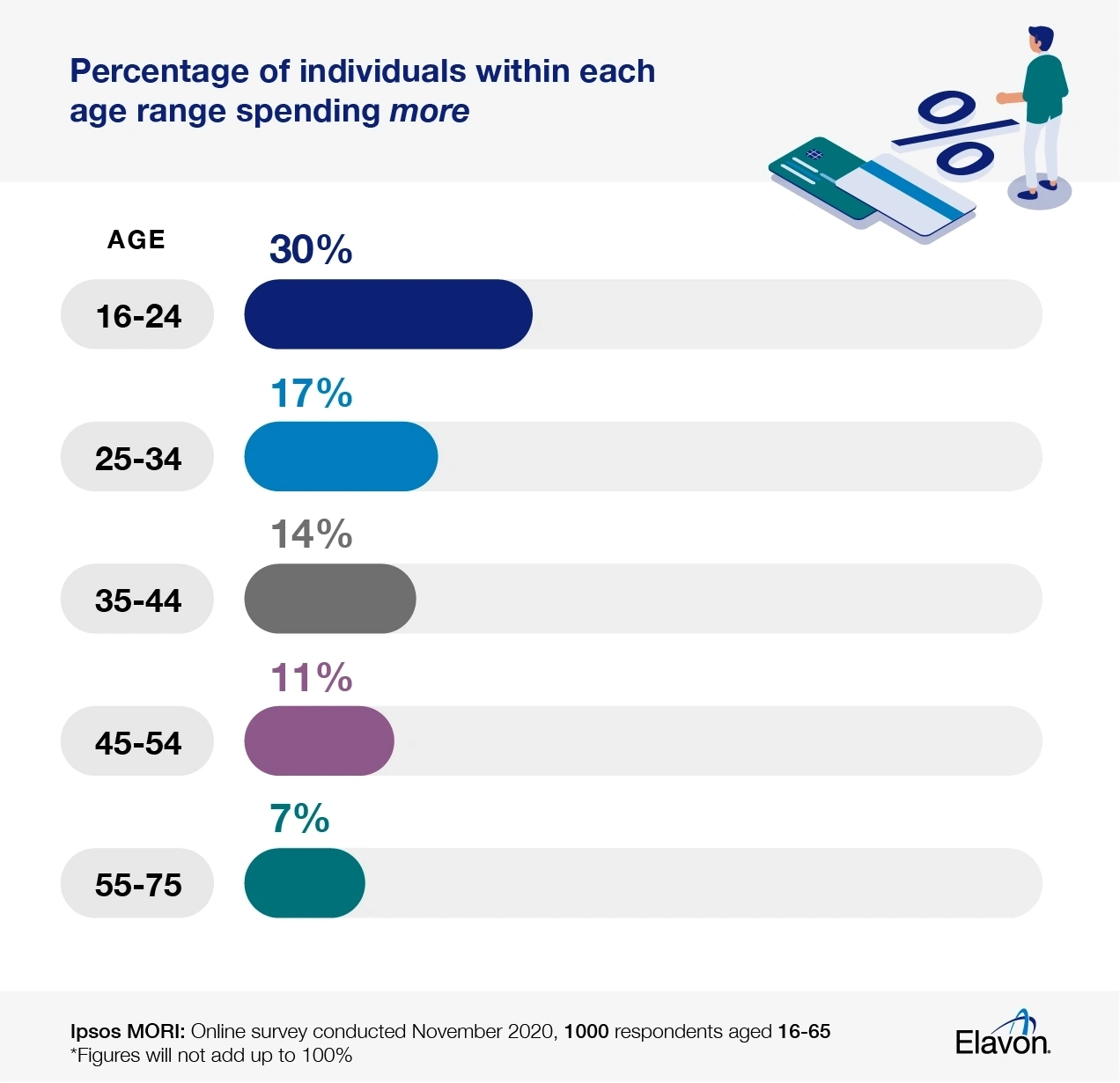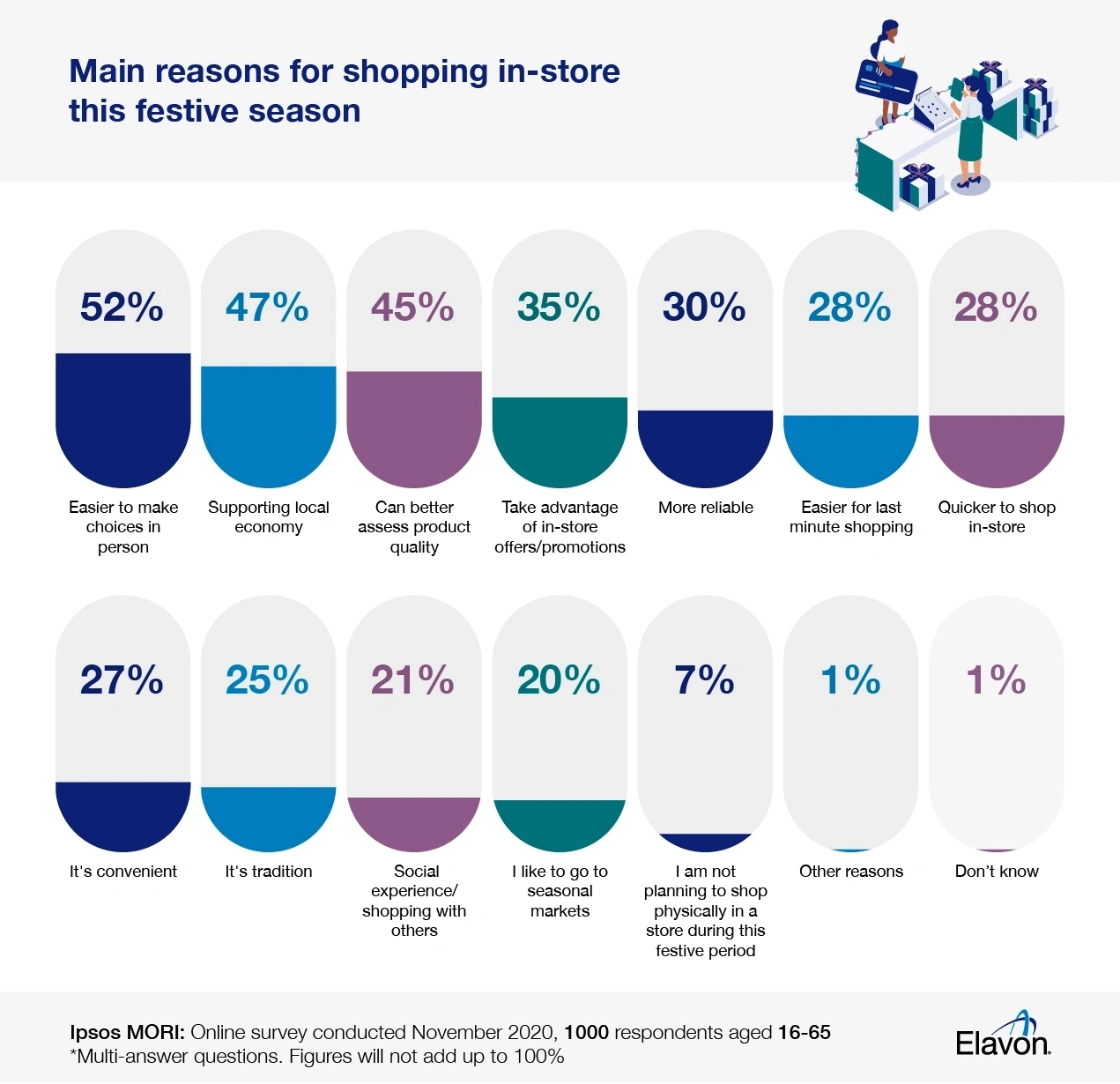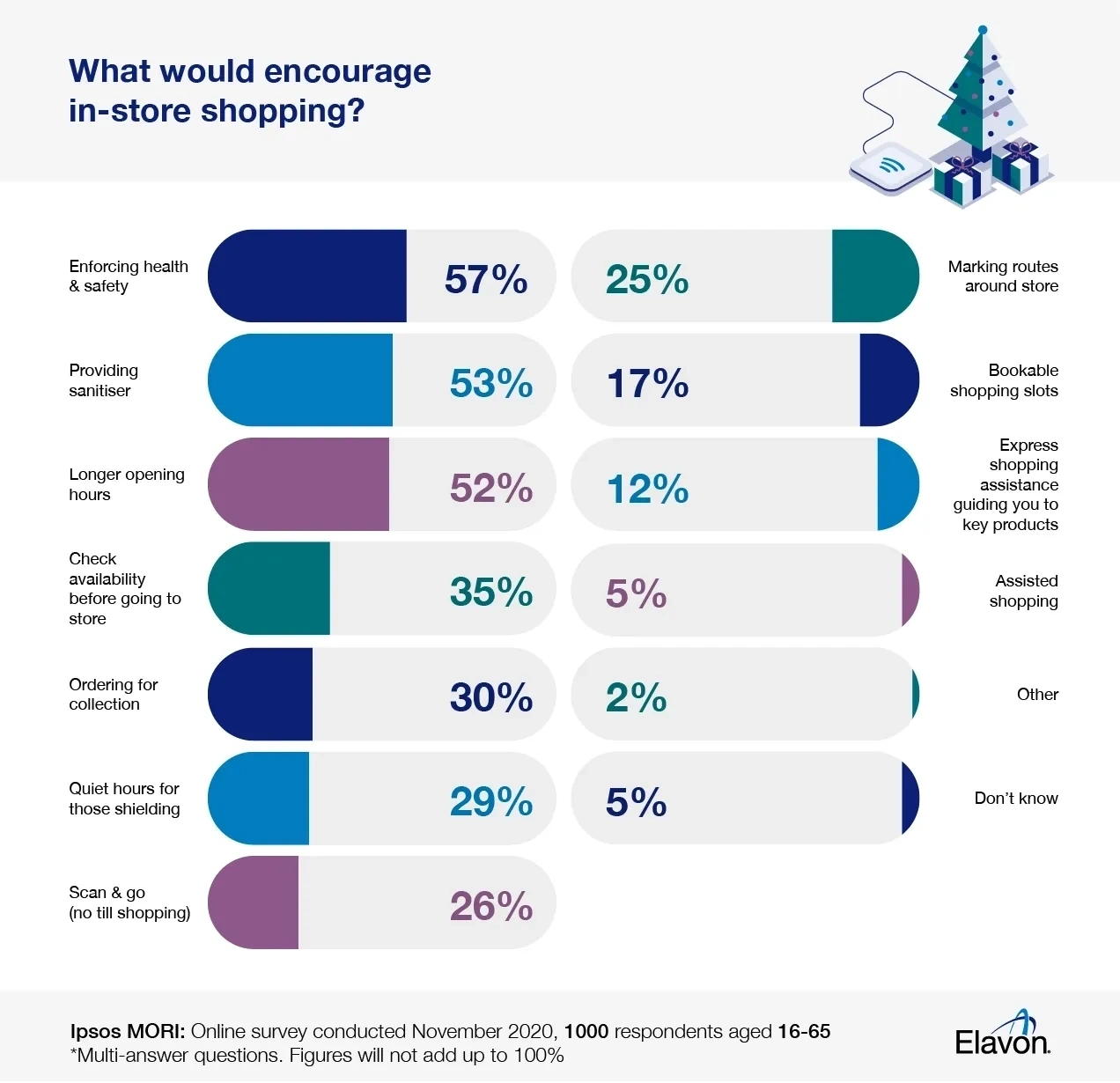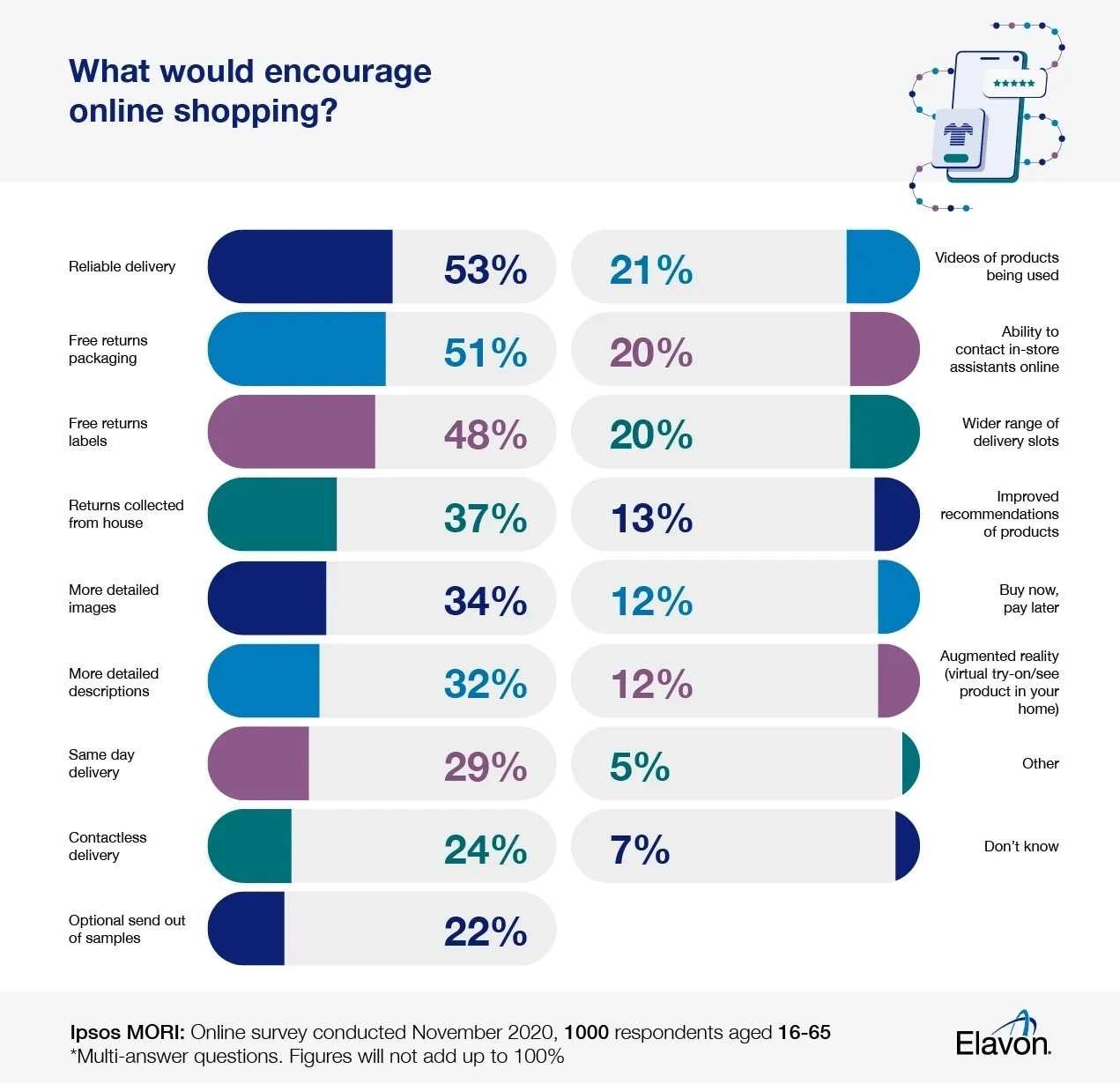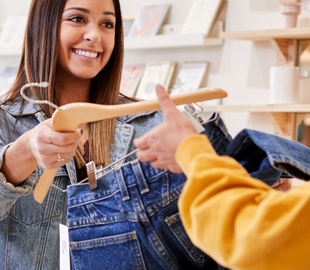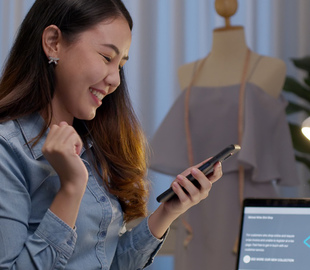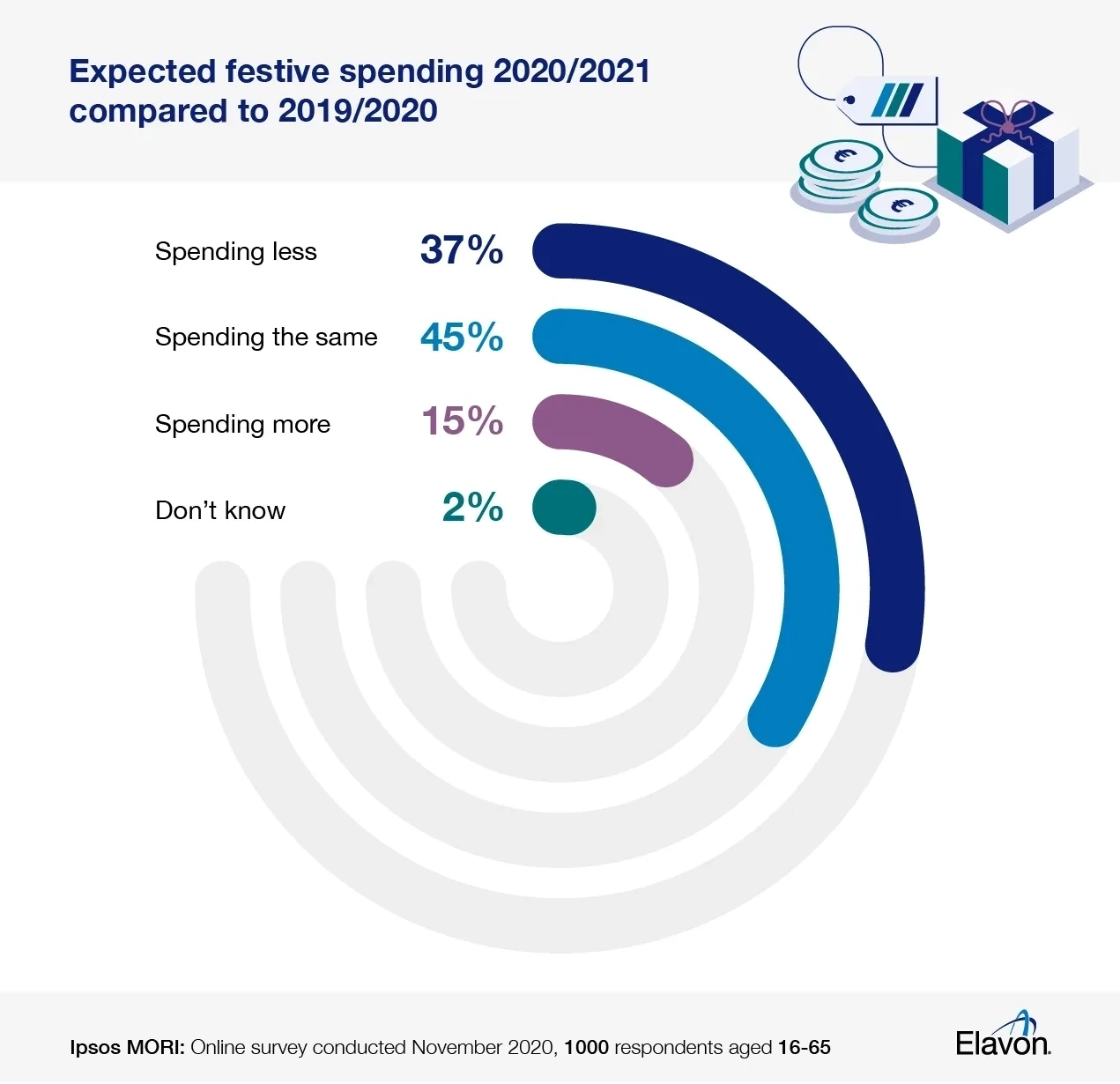
In the run up to the festive period of 2020, Elavon commissioned an online survey of 1,000 adults in Ireland about the nation’s spending plans and the reasons behind them.
In a nutshell: 60% of adults in Ireland plan to spend the same or more this festive season compared to the last. 93% are planning to shop in-store, with almost half (47%) doing so to support their local economy.
And there’s even more of interest within the details…
Frugal festivities?
Our findings reveal more than a third (37%) of us are planning to spend less this festive season than last. Almost half (45%) plan to spend about the same, with 15% intending to increase spending this year.
Of those planning to spend less (37%), the top three reasons were: planning smaller celebrations (39%), feeling the need to save or be ‘safer’ with money this year (35%) and a decrease in income (34%).
For those expecting to spend more (15%), the top reasons were: using money (52%) that would have been spent on other things (such as holidays, commuting, socialising), buying a treat for themselves (23%) closely followed by buying for more people this year (22%).
If we look into the ages of those expecting to increase their spending, approaching a third (30%) of those aged 16-24 intend to spend more. As age increases the percentage of individuals in each age bracket spending more decreases: 17% of those aged 25-34, 14% for 35-44 year olds, 11% for 45-54 down to 8% for those aged 55-65.
“It’s to be expected the pandemic would have some impact on consumer confidence, but it’s evenly split between those decreasing their spending, and those – when combined – who are intending to spend the same or more this season, with those aged 16-24 most likely to increase their spending,” says Simon Tune, Commercial Director for Elavon Europe.
“So, as has always been the case, retailers need to listen to what shoppers are saying they want.
“Whether online or in a face to face environment that means offering demonstrable value for money as shoppers raise their expectations of the consumer experience.
“That could mean actively demonstrating your health and safety and local credentials in a face to face environment, or supporting a smooth delivery and returns process if selling online. Consumers have more choice than ever before, and can easily and actively seek out those who are best meeting their expectations.”
Shopping: face to face or ‘clickety click’?
National and localised pandemic restrictions have changed the face of shopping this year – quite literally: masks are compulsory, shops have had to adjust to support social distancing, and many have taken their wares from the high street to online.
So – irrespective of whether shops are open or not at the time of our survey – we wanted to explore the biggest drivers when it comes to using a physical shop or an online one, assuming both were equally available.
Main reasons to shop in-store
With 7% of respondents saying they don’t intend to shop in a physical store at all this festive season, it means 93% of our respondents may do so.
Why? The biggest reason given was the ease of making choices when able to see items in person (52%).
Supporting the local economy was a motivation for almost half (47%).
And being able to better assess the quality of items was the third strongest driver (45%).
Notably among the others, one in four (25%) felt it was tradition to go to the shops, and around a fifth (21%) were keen on the social side of shopping or shopping with others.
What would encourage in-store shopping?
We also wanted to explore what could, during these times of social distancing, encourage more shoppers into physical stores while they’re open.
More than half (57%) said enforcing health and safety, such as wearing a mask, would help. This was followed strongly (53%) by providing hand sanitiser around the store, and longer opening times (52%).
Social distancing features – including approaches that make visits in-store quicker – are among the trends too. More than a third (35%) welcome the ability to check something is available in stock before going to the store, 30% were encouraged by the option to order items for collection in-store, and 29% like the idea of a ‘scan and go’ (no till shopping) approach. All representing methods that could reduce contact with others and time spent in store.
Around one in four (26%) were also encouraged by so-called ‘quiet hours’ for those shielding – where access is limited to those of, say, a certain age or profession, such as key workers.
“Customers are saying loudly and clearly what they want – to be safe while shopping, and to feel safe while shopping in these pandemic times,” says Simon.
“Adjustments that reduce exposure to crowds and potential risk points, such as contact with staff and other shoppers, seems to be resonating. Payments is a big part of this and was evidenced in our previous study on payment preferences as the first national lockdown restrictions lifted.
“If it’s something you need advice on - talk to us.”
What would encourage online shopping?
Delivery and returns provision are clear motivations for online shoppers – accounting for the top four responses.
Reliable delivery was overall top (53%) with second, third and fourth preferences dedicated to returns too: Just over half (51%) motivated by free returns packaging, followed by (48%) free returns labels and more than a third (37%) welcoming returns being collected from home.
Providing detailed images – offering the chance to zoom or rotate a product – appealed to just over a third (34%) with detailed descriptions following for just under a third (32%).
More than half of our respondents said earlier their prime reason to go into a physical shop was because it was easier to make choices in person (52%).
“The key findings here speak in some way to taking the face to face experience of a shop to your online store,” says Simon.
“Those buying from a physical shop can usually inspect, assess quality and value for money, and take it straight home with them, and - if there’s an issue – taking it back to the store is the traditional experience. It’s crucial to replicating that fuss-free ability to get items reliably delivered, return them if there’s an issue without additional cost and inconvenience, and inspect them closely for suitability.”
Summary
- Nine out of ten adults in Ireland (93%) are undeterred to use face to face shops.
- Six out of ten (60%) plan to spend the same or more this festive season compared to last.
- The age group most likely to increase spending over the festivities is the youngest with almost a third (30%) of 16-24 year olds planning to increase their spending.
- A big driver for face to face shopping at any time is the ease of making choices in person, with supporting the local economy being the second most important driver in Ireland (47%).
- The biggest drivers for face to face shopping in these times are demonstrable health and safety.
- For online shopping – the biggest drivers are reliable delivery, returns and things that replicate the face to face experience in an online environment – descriptions/imagery that make it easier to make choices, better assess quality and value for money.
We conducted this same survey in other countries too, which may interest you:
We asked these same questions to 1211 adults in the UK and 1092 adults in Poland. The research was conducted on i:omnibus, Ipsos MORI’s online Omnibus.
- Online interviews were carried out amongst adults aged 16-65 in Ireland.
- Our respondents base includes 1000 adults who completed the survey 9-20th November 2020.
- The sample obtained is representative of the population with quotas on: age, gender, region and working status
- The data has been weighted to the known population profile by age, gender, region, working and status to be nationally representative and reflect the adult population of Ireland.


